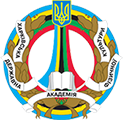- Головна сторінка
- →
- Періодичні видання
- →
- Слобожанський науково-спортивний вісник
- →
- Перегляд матеріалів
JavaScript is disabled for your browser. Some features of this site may not work without it.
Показати скорочений опис матеріалу
| dc.contributor.author | Rajkumar, Mariyappan | |
| dc.contributor.author | Logeswaran, Subbramani | |
| dc.contributor.author | Suryaraj, Selvaraj | |
| dc.contributor.author | Raveen, Murugesan | |
| dc.contributor.author | Vinoth kannan, Gunasekan | |
| dc.contributor.author | Sujinraj, Devaraj | |
| dc.contributor.author | Balaji, Ethiraj | |
| dc.date.accessioned | 2024-09-28T11:20:36Z | |
| dc.date.available | 2024-09-28T11:20:36Z | |
| dc.date.issued | 2024-09-26 | |
| dc.identifier.citation | Mariyappan Rajkumar, Subbramani Logeswaran, Selvaraj Suryaraj, Murugesan Raveen, Gunasekan Vinoth kannan, Devaraj Sujinraj, & Ethiraj Balaji. (2024). Exploring the efficacy of isometric strength exercises in knee rehabilitation among football players. Slobozhanskyi Herald of Science and Sport, 28(3), 108-115. https://doi.org/10.15391/snsv.2024-3.002 | uk |
| dc.identifier.issn | 1991-0177 | |
| dc.identifier.uri | http://repo.khdafk.com.ua/xmlui/handle/123456789/595 | |
| dc.description.abstract | Background and study aim: Isometric strength exercises engage the intricate knee joint, including the femur, tibia, and patella, along with multiple muscles and ligaments, aiding in the rehabilitation of knee injuries while supporting movement and injury prevention. The specific objective of this research is to investigate the effectiveness of isometric strength exercises in rehabilitating the knee injuries among football players, assessing their impact on recovery and performance. Material and methods: Thirty male ACL Knee injured football players were randomly assigned to isometric strength exercise group (ISEG) (N=15) (Age; 20±1.9, Height;171±4.5, Weight; 60±6.0) and control group (Age;21±1.3, Height;173±4.4, Weight; 63±8.2) and their age ranged between 18 and 23. Subjects were randomly selected from various football academies in Coimbatore, Tamil Nadu, India. Thirty subjects who will diagnosed by a physiotherapist and help of orthopaedician as having knee injuries in football players and who showed a typical restriction of Range of motion (ROM). Fifteen subjects underwent rehabilitation (Isometric Strength exercise Group) and the other 15 underwent cryotreatment (Control Group). Analysis was based on the active and passive flexion Range of motion (ROM) were measured by kinovea-0.9.5 software. Means and standard deviations (±) described all data, with Shapiro-Wilk tests checking for normality (p< 0.05). A dependent 't' test determined significant mean differences between experimental and control groups (p < 0.05). Results: The participants who underwent a regimen of Isometric strengthening exercises exhibited notable enhancements in their range of motion (ROM), highlighting the effectiveness of this comprehensive approach significantly improved in active and passive flexion Range of motion (p < 0.05). Conclusion: Isometric strength exercises demonstrate promise in enhancing knee rehabilitation outcomes among football players, warranting further exploration and implementation compared to control group. | uk |
| dc.language.iso | en | uk |
| dc.publisher | Слобожанський науково-спортивний вісник | uk |
| dc.relation.ispartofseries | 28;3 | |
| dc.subject | isometric strength exercises, Knee rehabilitation, Kinovea software and football players | uk |
| dc.title | Exploring the efficacy of isometric strength exercises in knee rehabilitation among football players | uk |
| dc.type | Article | uk |
Долучені файли
Даний матеріал зустрічається у наступних розділах
-
Слобожанський науково-спортивний вісник
Журнал містить статті, що відображають матеріали сучасних наукових досліджень у галузі фізичної культури та спорту

